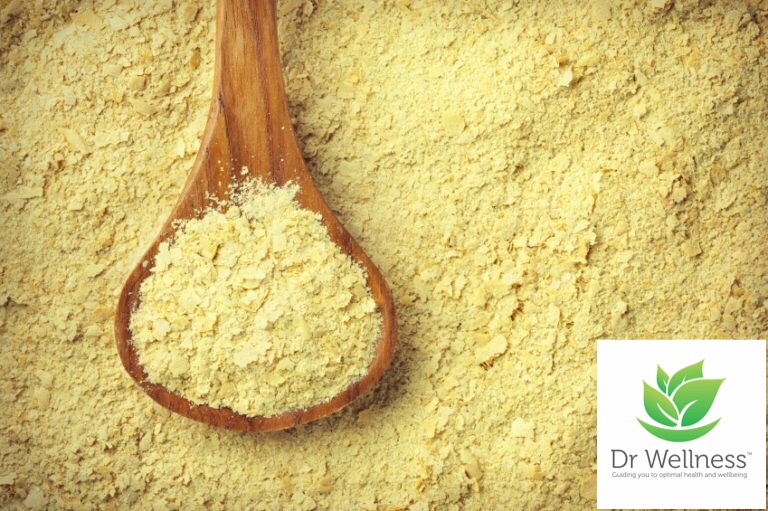Nutritional yeast is an inactive yeast (a good fungi aka fun guy!), produced from sugarcane, whey, blackstrap molasses or wood pulp. It is also known as ‘nooch’ or savoury yeast. When the yeast is harvested, it is washed, concentrated and then pasteurised (heat treated) so that it stops growing. It is then crumbled, flaked or turned into granules and sold in bulk or pre-packaged forms. It is frequently found in the condiment or baking section of your supermarket and other food stores.
Nutritional yeast is yellowish in colour and has a tangy, nutty, cheesy flavour. There are many uses for nutritional yeast. You can even sprinkle it (like salt) over your popcorn, salads, or smoothies or, stir it into soup, stews, macaroni cheese, pasta etc. It will also work as a thickener. The only thing it can’t do is be used for baking as it is an inactive yeast.
In terms of benefits, nutritional yeast gives you an extra nutrient boost thanks to it being a low calorie, complete protein super-food. It is jam-packed with vitamins and minerals, in particular B-complex vitamins, iron, zinc and selenium. It’s also gluten free; and low in calories, fat, and sodium. Looking at the nutrition facts in more detail, 1 serving (85g or ¼ cup) contains:
- 60 calories
- 9g protein
- 0.5g fat
- 5g carbohydrates
Thanks to all the great components it contains, nutritional yeast has all the following benefits:
- Improves gastrointestinal function: especially diarrhoea, appetite loss and certain types of sugar malabsorption.
- Improves immune function: including repairing your cells, and preventing cancer. Nutritional yeast also has helpful anti-‘bug’ properties especially against ‘bad’ yeasts like candida, and the ‘bugs’ that are always in the news-salmonella and E.coli.
- Complete source of protein: a super essential food component, found also in meats, fish, dairy, nuts, seeds, eggs, beans etc. Protein is an essential building block for humans and we must eat a certain amount a day for optimal health.
Lastly, let’s talk about the safety of nutritional yeast. If you have a yeast allergy, then theoretically, you may react to nutritional yeast. However, it is likely you won’t, due to how nutritional yeast is processed and deactivated. However, as a general rule, it is always best to cautiously try new foods to see if you react to it.
So give it go (cautiously) and please let me know what you think by commenting below.

